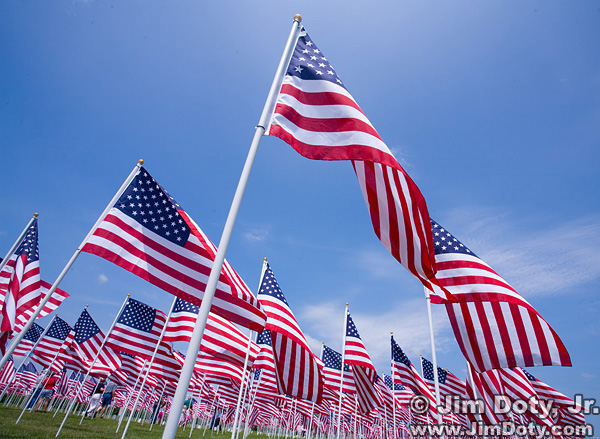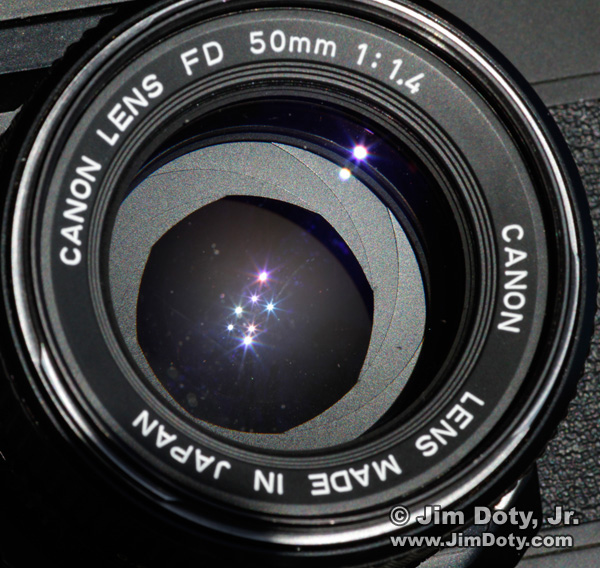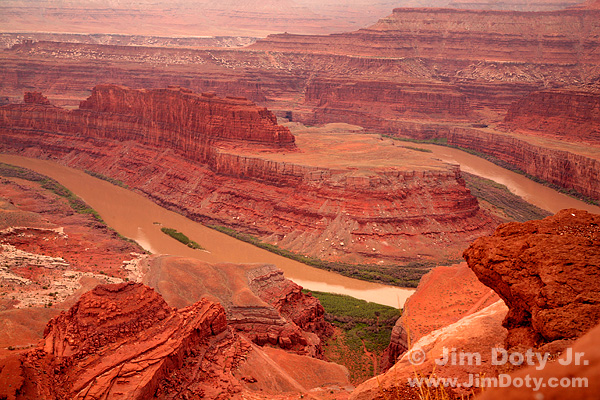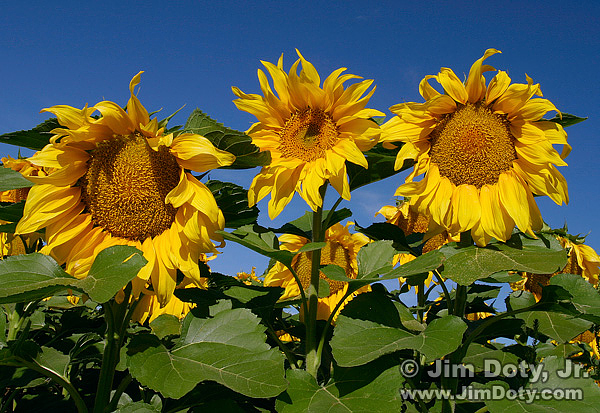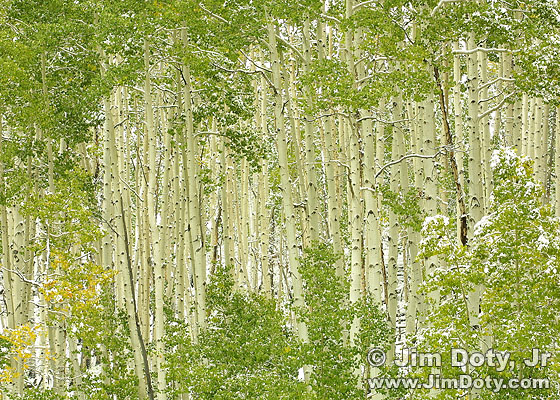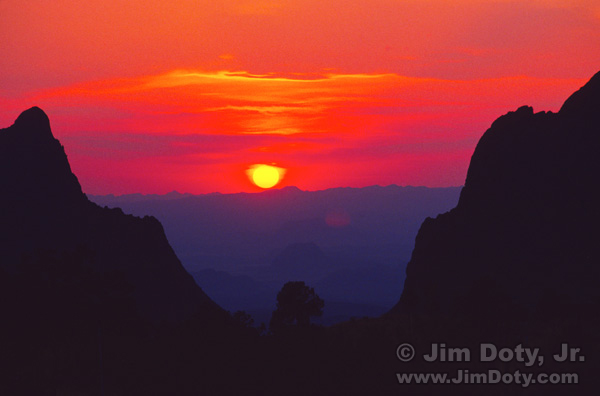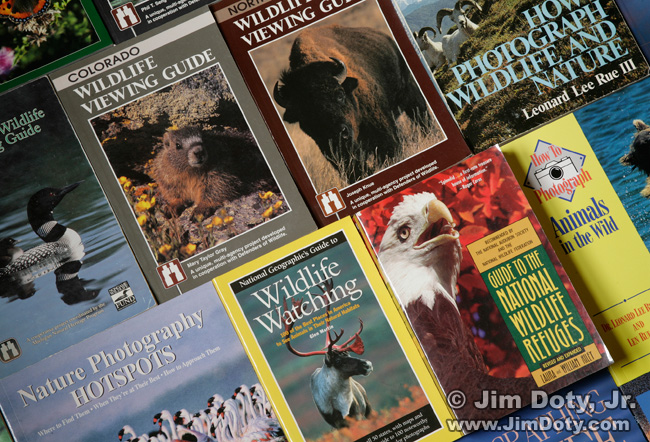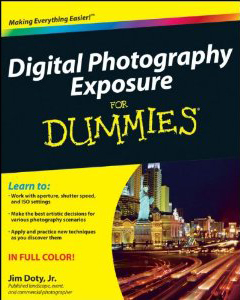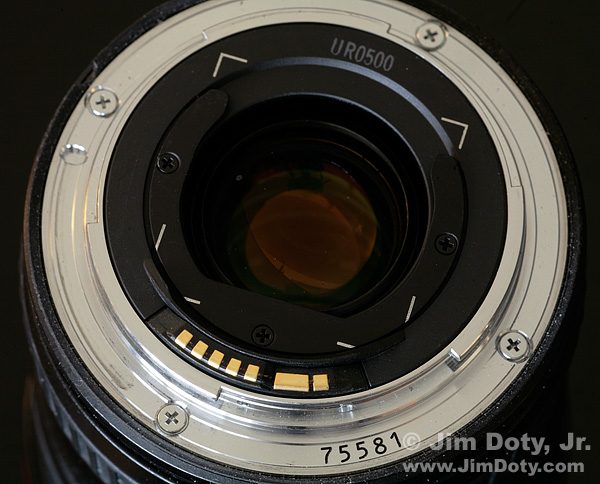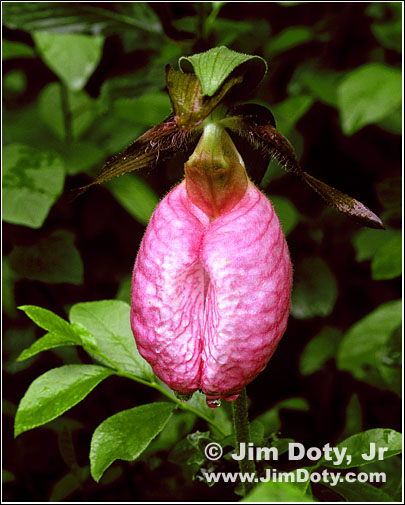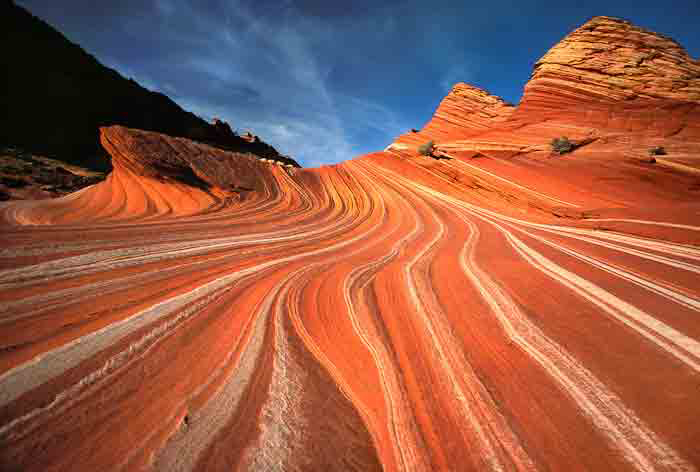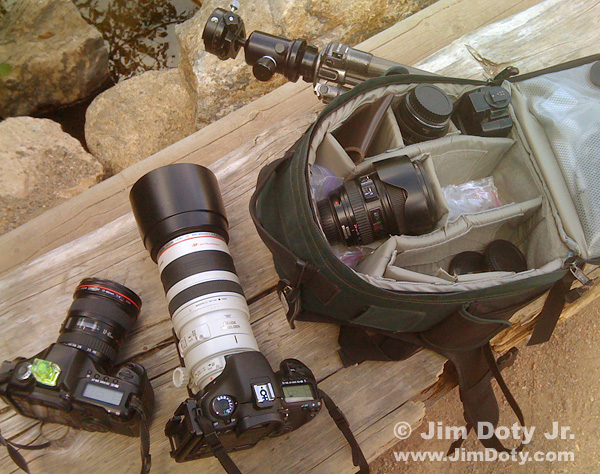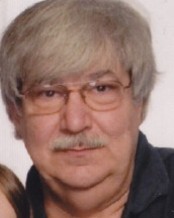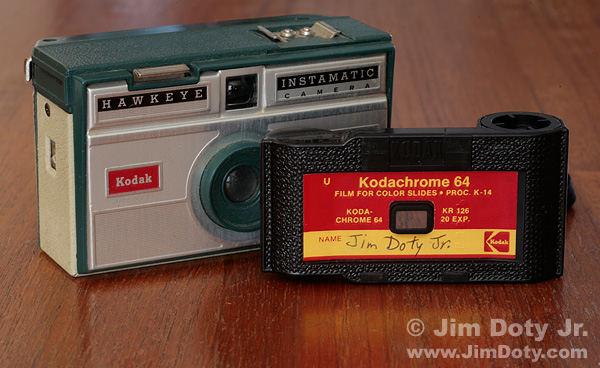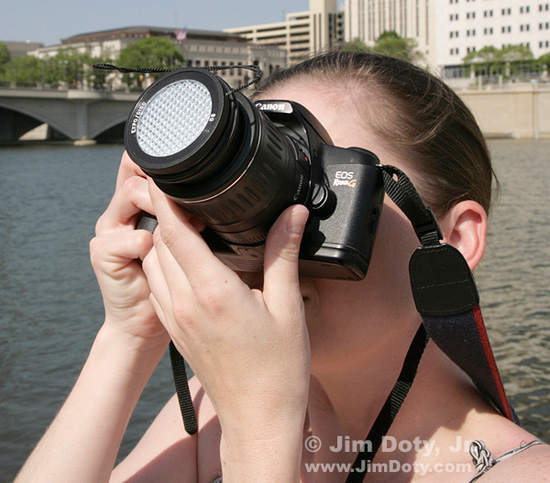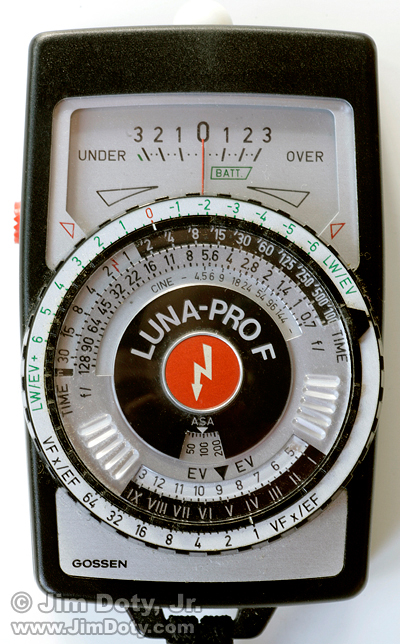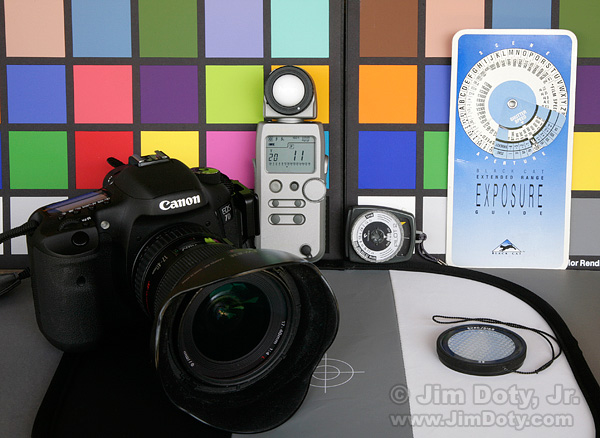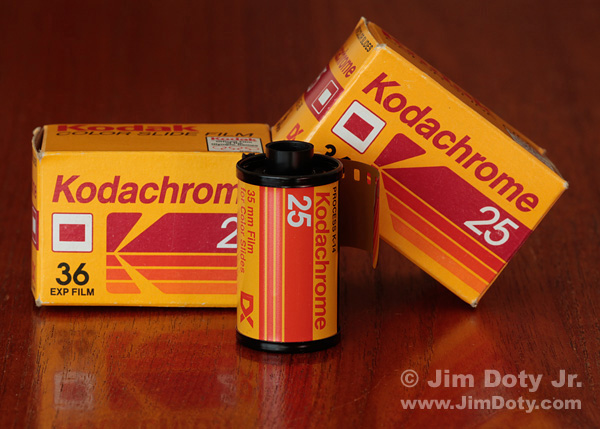Are You Kidding? “Shoot Now, Focus Later”
Imagine being able to take a picture now, and then change the point of focus later on. Is this possible? It is according to Lytro .
Dog in Flight: Capturing Action
Capturing action is a matter of choosing the right shutter speed. You have a lot of options from a sharp subject against a blurred background to a sharp background with a blurred subject, or both blurred, or a sharp subject and a sharp background.
Sai Charita: Dance Drama
Shooting “events” is both challenging and rewarding. The photographer has very little control over the lighting and the position of the subjects (unlike most other kinds of photography), so you make the most of what happens and improvise. Shooting events will do wonders for your photographic skills, not to mention the eye-catching photos that can be captured.
Speaking Your Camera’s Language: Aperture, Shutter Speed and ISO
Mastering exposure is a huge step toward better images. But to make your camera do its exposure tricks, you need to speak its language, and it’s not hard to learn. Apertures, shutter speeds, and ISO settings are exposure’s “Big 3”. Not only are they the key to technically correct exposures, they are the experienced photographer’s secret weapon in the pursuit of creative, dynamic images.
You can learn the language of exposure in this article which is part of an ongoing series of exposure articles which are linked on this page.
Take the Photo Anyway!
You have your photo all planned out long before you click the shutter, but the moment arrives and things don’t work out like you had envisioned them. What do you do? Maybe you should take the photo anyway.
Getting Maximum Sharpness
A lot of images fail because they just don’t look sharp. Of course there are times when you want a blurred photo, but most of the time photographers want part of their image (if not most of the image) to look sharp and crisp. The seeds in this sunflower photo are a good example of an image that asks to be sharp.
The RAW vs Jpeg Exposure Advantage
RAW files have a huge advantage over jpeg files when it comes to exposure latitude. With the same exact exposure, a RAW file can give you a good image while the jpeg file is a throwaway. Why is that? RAW files have a lot more exposure latitude than jpeg files. You can read all about it in The RAW vs Jpeg Exposure Advantage.
Can I Make Quality 8×10 Prints from my Digital Camera?
How big a print can you make from your digital camera and still have good image quality? That’s a common question. I received an e-mail today about camera file size and quality 8×10 inch prints. The question and my answer follow.
Photography in Big Bend
I prefer cool breezes, mountains, pine-scented air, and cold mountain lakes or streams, so I was totally surprised when I fell in love with Big Bend National Park. Located in the hot, Chihuahuan Desert in southwest Texas, it is the opposite of where I prefer to be, both personally, and photographically – or so I thought. But my first trip to Big Bend changed all of that.
Finding Wildlife
The first step to photographing wildlife is finding wildlife. In the case of common wildlife, that’s easy. If you are looking for squirrels you may not need to look any farther than your own back yard. But if you want to photograph something a little more exotic, like Chachalacas or Green Jays, you need to know where to look for them (the southern tip of Texas).
High Praise for My New Photography Book
The great thing about teaching photography is “watching the light go on” as the photographers in the class, workshop, or field trip discover new ways to create great photos.
It is a bit surreal to send out a book to be read by people I will never meet, because I don’t get to see the “light go on” as photographers read the book. About as close as I can come to that is reading what photographers say about what the book did for them.
Help! I’m in Hawaii and My Lens Quit Working!
It is not a good thing to have your lens refuse to work when you are on the trip of a lifetime. It was a pretty desperate phone call from a good friend who was vacationing in Hawaii.
I went through all of the usual things to do that will usually bring a lens back to life. He tried them all and none of them worked.
What to Do When A Lens Quits Working
It is an unhappy thing when a lens quits working normally, or stops altogether, complete with some kind of error message on the camera body. The good news is that you can usually bring your lens back to life and it only takes a few seconds to a few minutes to do. Details are here.
Incident Light Metering on the Cheap
A simple $12 accessory will do most of the work of a $300 incident light meter. Hard to believe? Keep reading.
Unknown Patagonia – Free eBook from Linde Waidhofer
I’ve been a fan of Linde Waidhofer’s work ever since I came across her book, Stone & Silence with gorgeous images from the Southwestern United States (see one example above).  So I was pleased to learn she has a new book out, Unknown Patagonia, Chile’s Secret South.
Amazing, Small, Inexpensive, HD Video Camera
Looking for a small, mountable, “ideal for sports and action”, inexpensive ($179 – $299) high definition video camera with a waterproof housing and image quality that Lucasfilm (the Star Wars people) calls “amazing”? Take a look at this amazing video footage (with skiing, snow boarding, surfing, cliff diving, motocross, auto racing, jet piloting, base jumping, and parasailing). Then keep reading! This camera will go anywhere and mount just about anywhere.
For several months on various “outdoor” TV networks (National Geographic, Discovery Chanel, Animal Planet and others) I’ve watched some remarkable video footage from a very small, mountable HD video camera. I didn’t recognize the brand or model so I’ve been searching for the camera and finally located it. It is the GoPro HD HERO which can be mounted on helmets, cars, motorcycles, surfboards, and about anything else you can imagine. Imagine mounting it on a pole with some bait to record the bite of a shark from inside the sharks mouth ( it was the “inside the shark’s mouth” video sequence that got my attention and started me on my search for this camera).
Choosing Photo Gear For Airline Travel
Traveling by plane severely limits the amount of camera equipment you can take with you. As lots of photographers will attest, take everything with you as carry-on gear, NOT in your checked luggage. The airlines will NOT reimburse you for lost or damaged photographic equipment (see my comments toward the end of this article). If your checked luggage goes astray, everything you need should be with you in your carry-on luggage. And you need a backup plan in case something quits working.
My New Photography Store
My new photography store (powered by Amazon.com) is at my Web site here, and as a stand alone site here. It has some of my favorite photography books and photo equipment. Ordering, payment, and shipping are all taken care of by Amazon’s safe and efficient system. If the feed from Amazon to my photography store doesn’t show up right away, just refresh the page.
In Memory of Mike Baroli
UPDATE: I wrote an expanded version of this article and posted it October 5, 2018.
I just received an e-mail from one of Mike Baroli’s cousins with the sad news that Mike passed away December 19, 2010. The memorial service was yesterday at Spring Creek Baptist Church in Oklahoma City.
I met Mike behind the sales counter in a camera store, but Mike was more than a salesperson, he was a Photographer with a capital “P”. Our meeting came about quite by chance (or – looking back – maybe not by chance), but he transformed my photography.
Tim Grey Recommends Digital Photography Exposure for Dummies
With 12 books and hundreds of magazine articles to his credit, digital photography expert Tim Grey really knows his stuff. If you love digital photography and you aren’t on his e-mailing list, you should be. More about that later.
In his Elements Weekly eNewsletter for today (January 10), Tim makes the following book recommendation:
*** *** ***
Book Recommendation
As you know, I tend to focus most of my energy on helping photographers with their images after the capture. I do lead a variety of field photography workshops, but my focus tends to be more on what happens after the picture is actually taken. When it comes to the actual capture, the most common questions I hear from photographers relate to exposure. I’ve recently discovered a book that helps photographers truly understand exposure, and that knowledge can dramatically improve the quality of your digital photos. The book is Digital Photography Exposure for Dummies, authored by Jim Doty, Jr., and published by Wiley. This book provides you with everything a photographer needs to know in order to truly understand exposure and how it affects the original capture.
If you’re interested in learning more, or perhaps purchasing a copy of this book, you can learn more through Amazon.com here.
*** *** ***
Last Two Rolls of Kodachrome
I finished my last two rolls of Kodachrome slide film today and shipped them off to Dwayne’s Photo in Kansas, just in time for the deadline.
Turn Your Camera Into An Incident Light Meter
There are a lot of advantages to using an incident light meter, and you can read about them here. But what if you don’t have an incident light meter? Or you are packing light and don’t want to take your incident light meter with you? There are several less expensive alternatives.
Season’s Greetings!
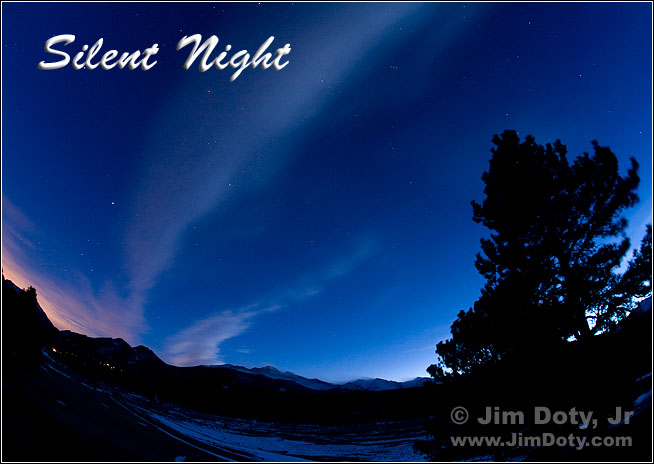
Snow glistens in the last light of dusk.
Distant clouds glow with the fading light from the sun, long since set.
A chill fills the calm night air.
Stars twinkle in the deepening winter sky.
The crunch, crunch, crunch of gravel on the path.
Lights come on in the distance. Warm and inviting.
Home. Family. Friends. Dinner and the opening of gifts.
Christmas!
Simplify Your Life with an Incident Light Meter
There’s no question that in some complex metering situations, it can be tough to figure out the best exposure with the meter in your camera. An incident light meter can be quicker, faster, simpler, and more accurate in some of those same situations.
Using Your Camera’s Light Meter
Taking charge of exposure is one of the best indications someone is getting serious about the quality of their images. Learning the ins and outs of the camera’s reflected light metering system is a great way to start.
Last Chance to Process Kodachrome Slide Film
Dwayne’s Photo, the last lab in the U.S. (and so far as I can tell, in the whole world) to process Kodachrome slide film, will quit processing Kodachrome at the end of this month. This is the end of an era. Your film must be in by noon on December 30. After that date, it will no longer be possible to process Kodachrome slide film. If you want push processing, the deadline is December 23.
Best Advanced Exposure Book
I have no idea how Michael Freeman can be a well traveled, international photographer and still find time to write so many terrific photography books. But somehow he manages to do both. I suspect he never sleeps. I imagine him creating images and writing books 24 hours a day, stopping only to eat once or twice a week!!
Great Deal? Don’t Get Burned!
Is it a great deal? Or is it a rip-off? You are searching online for a good price and you come across a terrific deal. Are you about to get burned? There are ways you can tell.
Geminid Meteor Shower Peaks Tonight – Dec 13-14
Observers with clear dark skies can see up to 100 meteors per hour. Best viewing and photography will be in the hours just before dawn on Dec 14. Details follow.

